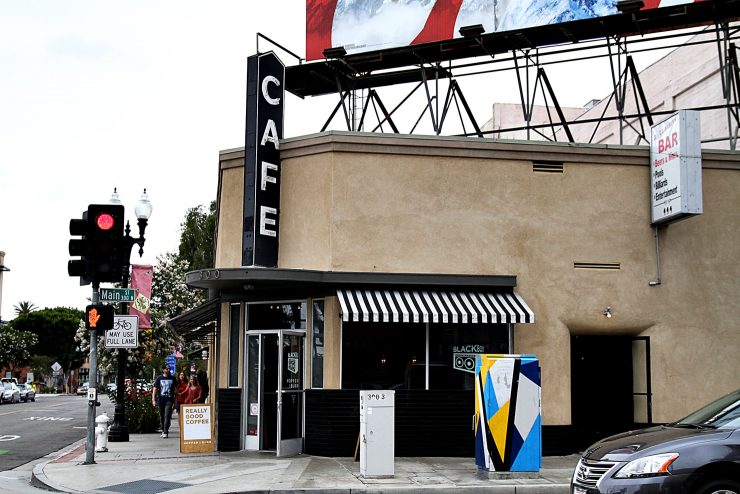
Santa Ana is the second biggest city in Orange County, situated just an hour south of Los Angeles. It’s home to only a handful of specialty coffee shops, none more special than Truman Severson’s Hopper & Burr, a pop-up cafe that first popped in February 2015, and then decided to stick around.
Severson is a longtime coffee vet, having started as a Starbucks barista in 2007 before moving into specialty coffee, from Caffe Luxxe to Intelligentsia Coffee—where he worked with now-power players Charles Babinski, Chris Owens, and “Nicely” Alameda. His last stop was as an educator and multi-season barista competitor for Portola Coffee Lab, then manager of Portola’s Theorem, their concept coffee bar. Casual coffee drinkers might know him from his co-starring role in Rock Baijnauth’s Barista documentary film.
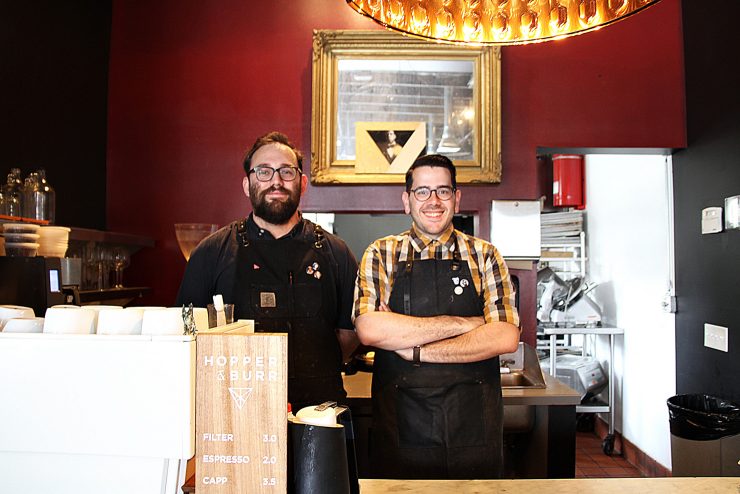
Equipped with all that experience, Severson had a clear idea of what he wanted to accomplish with Hopper & Burr. The cafe is open from 7 a.m. to 3 p.m. Monday to Saturday, right in the hip Arts District section of downtown Santa Ana. Somehow seamlessly housed within a burger joint, Hopper & Burr nevertheless has plenty of seating and Wi-Fi. The fact that the cafe keeps strictly daytime hours, when the coffee vibe is stronger, makes it so you (almost) don’t notice its setting. The corner space is well-equipped: brewing is done on a La Marzocco Linea Classic, grinding for espresso and filter is handled with a Mahlkönig K30 and an EK 43, respectively; and a FETCO Extractor-series brewer covers the filter coffee.
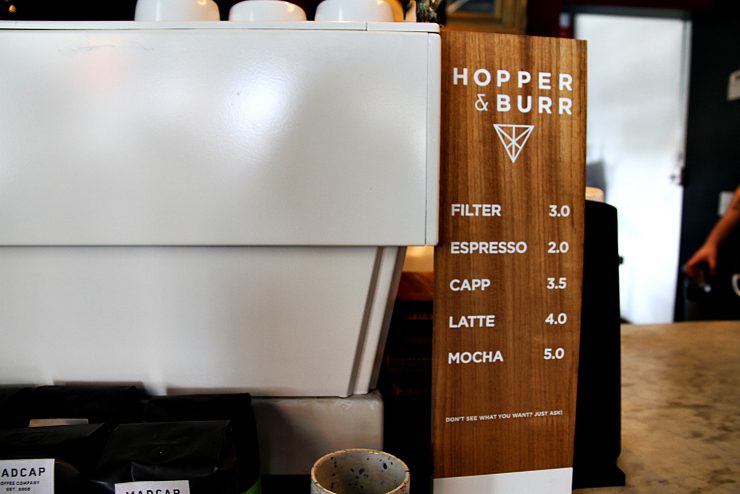
Now happily building his own brand as Hopper & Burr, Severson remains a voice for quality and progressive practices in the SoCal coffee scene, and his CV alone makes him an absolutely fascinating interview subject. But the scene at H&B is far removed from the dry ice theatrics of Theorem—here the vibe is about “simplicity and forthrightness”, which in coffee might as well be code for professional maturity. I met with Severson in Santa Ana to learn more about the past, present, and future of Hopper & Burr.
Why did you choose Santa Ana? Were there other ideas of where you could possibly open?
In the early stages I toyed with other parts of Orange County, but in the end, Santa Ana is what made the most sense. Santa Ana is one of the few places in Orange County that is old enough to function like a real city. Lots of Orange County was developed in whole communities [at once], which means rather than downtowns or city centers, you just get strip malls. Santa Ana is different in that we have the physical function of a big downtown tucked into just a few blocks. I love it here.
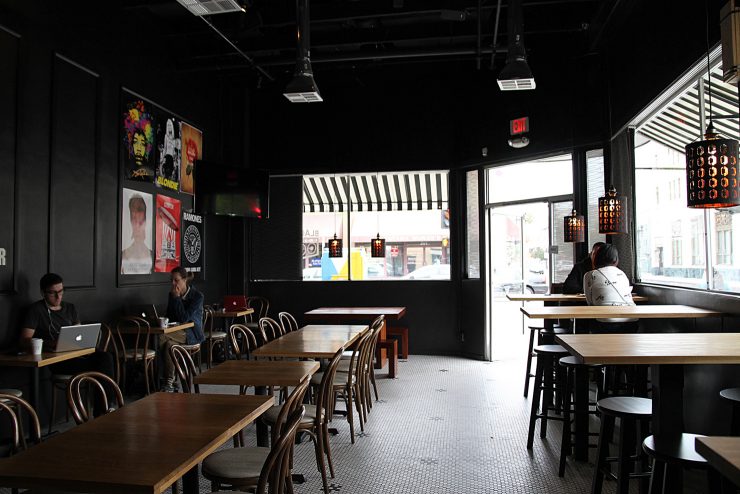
Was Hopper & Burr always intended to be a pop-up? How does it differ from having your own brick-and-mortar space?
It was never intended to be a pop-up. We were looking for brick-and-mortar spaces right off the bat, but when nothing really presented itself, we reached out to some of the restaurants we knew and eventually came to a lovely agreement with the folks here at Little Sparrow [now Black Box]. As far as what differs, we’re looking forward to finding out! We’re building out our own space currently, and expect to be opening [it] in the next couple months. We’re looking forward to being able to expand our menu, our hours, and our overall control of the customers’ experience. While being a pop-up has plenty of perks, it can be difficult to communicate our brand, as well as cater to our customers to the degree we would like to [while we’re] in someone else’s space.
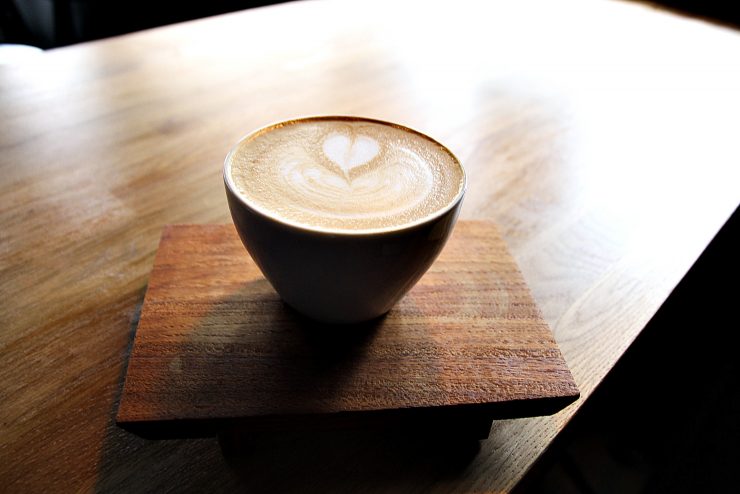
Hopper & Burr is a multi-roaster cafe. Tell us about some of the roasters you feature.
Right now we’re serving Heart and Madcap, however we also buy from Parlor and have in the past served coffees from Phil & Sebastian, Saint Frank, and George Howell. We try to buy and serve coffee that people don’t have access to around here. There are so many roasters these days that it can feel overwhelming, so we try to curate a menu that shows off the tastiest coffees we can get a hold of.
What’s on the menu besides coffee?
Right now we mostly just serve coffee drinks and toast, having very little room [to operate]. However, we will expand our menu at our new space to include teas, non-coffee drinks, and a full selection of baked goods.

What makes Hopper & Burr different from nearby coffee shops?
What I hope sets us apart is a focus on simplicity and forthrightness. The coffee industry on the whole does this thing where we say something like, “We really want to show off the work being done by our farmers and producers,” and then when we get back to our shops we use lots of showy brewers and gadgets, which more just shows off the work being done by the barista—which is a good thing, but not the intended thing. Or we may say, “We want to focus on customer service”—again, a very good thing, but in our cafes we set up systems and menus and bars that look cool, but [they can] ultimately alienate or intimidate customers. My hope for Hopper & Burr is that we would minimize the focus on the barista, so that those who want to focus on the coffees may do so, and those who want to focus on their coffee-shop experience would also be able to do so.
Is there a target date for the new space?
We’re hoping/planning to be open in the new cafe in August. It’s about a block and a half from where we are now, under the historic clock tower in Santa Ana’s first skyscraper—it’s only a four-story building, but it was built in 1913.

Any other future plans?
Who knows. Right now we’re just trying to get the brick-and-mortar up and running, and we’ll go from there!
Hopper & Burr is located inside Black Box at 300 North Main Street, Santa Ana. Visit their official website and follow them on Facebook, Twitter, and Instagram.
Tatiana Ernst is a Sprudge staff writer based in Los Angeles. Read more Tatiana Ernst on Sprudge.
The post Truman Severson of Hopper & Burr: Coffee Simplicity In Orange County appeared first on Sprudge.

